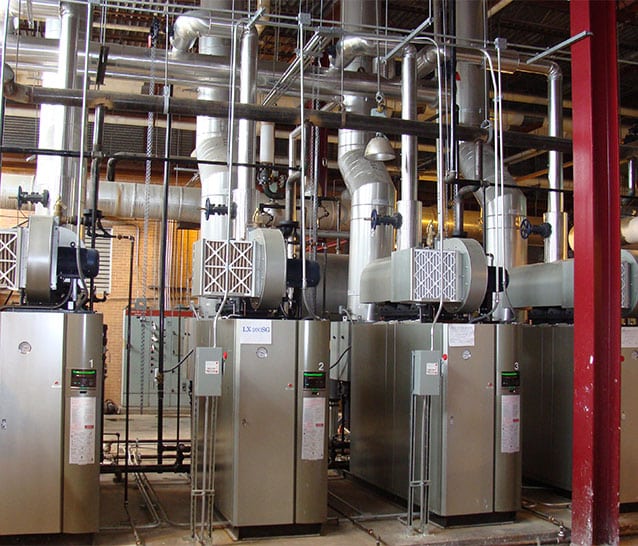
Unveiling the Power of Steam Boilers: Efficient Heat Generation for Industrial Applications
Steam boilers are the workhorses of countless industries, providing a reliable and efficient source of heat for a wide range of applications. These robust systems harness the power of steam, a versatile and energy-dense medium, to meet the heating needs of industrial processes. In this article, we will delve into the world of steam boilers, exploring their fundamental principles, efficiency considerations, industrial applications, and the critical role of pressure in harnessing their potential.
Definition and Basic Functions of a Boiler
A boiler refers to a specialized equipment that generates steam or hot water by burning fuel. Its primary purpose is to transfer heat energy to water, thereby producing steam that can be utilized for various processes or heating purposes. Essentially, a boiler converts water into steam through combustion, harnessing the latent energy stored in fuel to power industrial operations.
Importance of Steam Boilers in Various Industries
Steam boilers are indispensable in countless industries, serving as the backbone of operations in sectors such as manufacturing, power generation, pharmaceuticals, food processing, and more. A reliable steam boiler ensures seamless production processes, heat generation for various applications, sterilization, and countless other industrial functions.
Overview of Steam Boiler Components and Operation
Steam boilers consist of several key components, including a burner, combustion chamber, heat exchanger, feedwater system, and control systems. The burner ignites the fuel, creating a controlled combustion process inside the combustion chamber. Heat energy is then transferred to water through the heat exchanger, converting it to steam. The feedwater system supplies water to the boiler and helps maintain the desired operating conditions. Advanced control systems ensure optimal performance, efficiency, and safety throughout the boiler’s operation.
Now that we have laid the foundation, delve deeper into the fascinating world of steam boilers! Discover how they revolutionize industries and drive efficient operations.
Boiler Types
A. Fire-tube boilers
Fire-tube boilers are a common type of steam boiler. They are designed with a cylindrical shell filled with water, and the hot combustion gases flow through the tubes within the boiler.
Advantages:
- Compact size and relatively simple design
- Quick heat transfer due to a large surface area for heat exchange
- Ability to handle a wide range of steam demands
Common applications and industries:
- Power plants
- Industrial processes
- Heating systems in buildings
B. Water-tube boilers
Water-tube boilers, on the other hand, have water-filled tubes that circulate hot combustion gases. The tubes are typically arranged in a spiral or parallel configuration, allowing for efficient heat transfer.
Benefits of water-tube design:
- High steam generation capacity
- Ability to handle high pressures
- Quick steam response
Industries that commonly use water-tube boilers:
- Chemical plants
- Refineries
- Power stations
C. Electric boilers
Electric boilers utilize electricity to generate steam. They do not produce any direct emissions during operation and are often used in applications where clean and efficient steam production is required.
How electric boilers operate: Electric boilers heat water using electric resistance heating elements that are submerged in the water. As the elements heat up, the water transforms into steam, which can then be used for various purposes.
Advantages and limitations of electric boilers:
- High efficiency
- Zero emissions during operation
- Suitable for small-scale applications
- Dependent on a reliable electricity source
- Higher operating costs compared to other boiler types
Key Boiler Components
A. Furnace
The furnace is an essential component within a steam boiler that plays a critical role in the generation of steam. It provides the necessary heat for boiling water and converting it into steam. The furnace acts as a combustion chamber where fuel is burned, producing the heat energy required for the steam generation process.
There are various types of furnaces used in different steam boilers, each with its own unique characteristics and advantages. Common types include:
- Fire-tube Furnaces: These consist of a large cylindrical shell surrounded by water, with fire tubes running through it. Fuel is burned inside the tubes, transferring heat to the surrounding water.
- Water-tube Furnaces: In these boilers, the water is contained within the tubes and the heat is generated externally. Fuel burns outside the tubes, heating the water within and creating steam.
- Fluidized Bed Furnaces: This type of furnace suspends fuel particles in a fluidized bed of air, promoting efficient combustion and heat transfer.
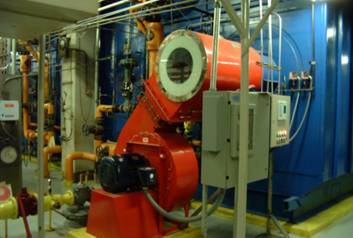
B. Burner
The burner is a crucial component responsible for the combustion process within a steam boiler. It controls the flow of fuel and ensures efficient combustion, resulting in the production of heat. The type of burner used in a boiler depends on its design and fuel requirements.
There are various burner types, including:
- Gas Burners: These burners are designed to ignite natural gas or liquefied petroleum gas (LPG) as the primary fuel source.
- Oil Burners: Oil burners are used when the boiler operates on liquid fuels such as light oil, heavy oil, or diesel.
- Dual-fuel Burners: These burners can operate on both gas and oil fuels, offering flexibility depending on the availability and cost of each fuel type.
It is important to select a burner that is compatible with the boiler’s fuel options, as well as consider its efficiency and emissions performance.
C. Heat Exchanger
The heat exchanger is responsible for transferring heat from the combustion gases to the water within the boiler. It facilitates the transfer of thermal energy, ensuring efficient steam generation.
Within steam boilers, there are different types of heat exchangers commonly used:
- Shell and Tube Heat Exchangers: These consist of a large shell filled with tubes. Hot combustion gases flow through the tubes, while water circulates around them, absorbing heat.
- Plate Heat Exchangers: Plate heat exchangers utilize multiple thin plates stacked together. Hot gases flow on one side of the plates, and water on the other, promoting heat exchange.
- Condensing Heat Exchangers: These heat exchangers are designed to maximize heat transfer efficiency by condensing the water vapor in the exhaust gases, recovering latent heat.
D. Steam Drum and Water Drum
In steam boilers, both steam and water drums are important components that contribute to the steam generation process. The steam drum collects and stores steam generated by the boiler, while the water drum holds water that will be converted into steam.
The steam drum plays a crucial role in separating steam from water, ensuring only dry steam is distributed for various applications. It also helps regulate pressure within the boiler system. On the other hand, the water drum stores the water supply that will be heated and transferred to the steam drum for conversion.
Proper maintenance of steam and water drums is essential to ensure their reliable operation and prevent issues like corrosion or scale buildup.
E. Economizer
Economizers are important boiler components that contribute to overall efficiency. They are heat exchangers that preheat the feed water before it enters the boiler, utilizing waste heat from the flue gases.
By preheating the feed water, economizers reduce the energy required to convert water into steam, thus improving fuel efficiency. They also help lower emissions and increase the overall environmental sustainability of the boiler system.
There are different types of economizers commonly used, such as:
- Non-condensing Economizers: These economizers operate at temperatures above the dew point of the flue gases, recovering sensible heat only.
- Condensing Economizers: Condensing economizers cool the flue gases below their dew point, allowing for the recovery of both sensible and latent heat.
- Combustion Air Preheaters: These economizers heat the combustion air entering the boiler, resulting in increased fuel efficiency.
F. Superheater
The superheater is a key component responsible for increasing the temperature of the steam generated by a boiler. It plays a crucial role in enhancing the thermal efficiency and usability of the steam for various applications.
Superheaters achieve their function by exposing the steam to additional heat, raising its temperature above the boiling point. This not only ensures the production of dry steam but also enhances its energy content and the overall performance of the steam system.
However, superheaters can face issues related to overheating or insufficient heat transfer, which may require troubleshooting and proper maintenance to ensure optimal performance.
G. Regulators
Regulators in steam boilers are important control devices that help maintain key parameters such as pressure and temperature within the desired range. They ensure safe and efficient boiler operation, preventing operational issues or system failures.
Pressure regulators help regulate the steam pressure released from the boiler, ensuring it remains within safe operating limits. They prevent pressure build-up and potential damage to the system.
Temperature regulators, on the other hand, monitor and control the temperature of the steam or water within the boiler, ensuring it remains within the required range for efficient operation.
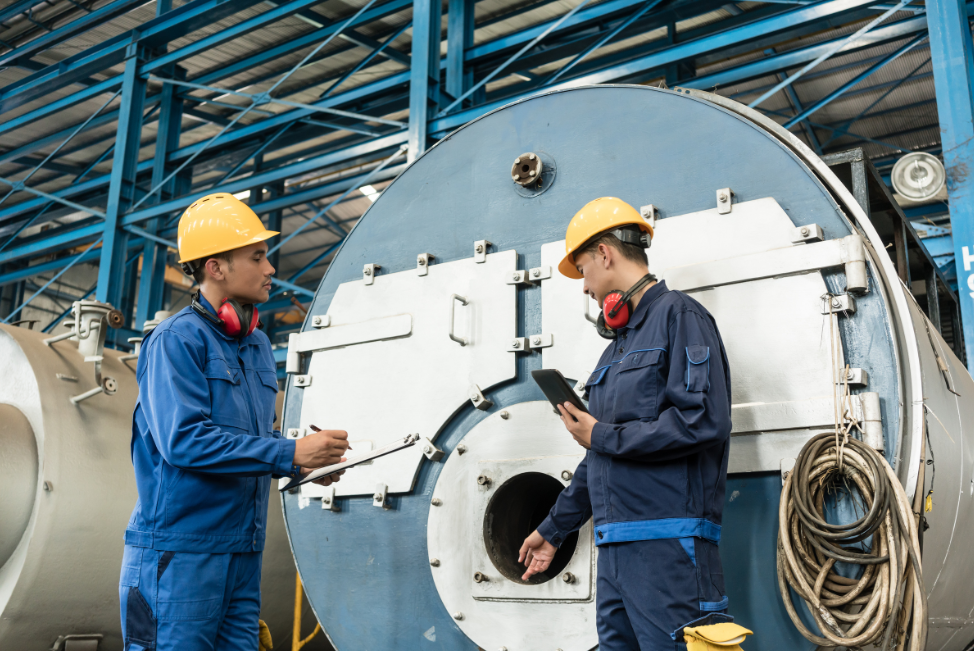
Boiler Operation
Proper operation of steam boilers is crucial to ensure their efficiency, safety, and longevity. This section outlines the necessary procedures and precautions for both starting up and shutting down a boiler.
A. Start-up Procedures
1. Step-by-step guide to properly starting a steam boiler
Before starting the boiler, it’s important to follow a step-by-step guide to ensure a smooth and safe start-up process. This includes:
- Checking the water level and maintaining it within the recommended range
- Purging the boiler to remove any trapped air or contaminants
- Ensuring all valves and controls are in their proper position
- Starting the burner and gradually increasing the firing rate
- Monitoring the boiler parameters and making necessary adjustments
2. Precautions and safety measures during start-up
During the start-up process, it’s essential to take the necessary precautions to minimize the risk of accidents. Some key safety measures include:
- Wearing appropriate personal protective equipment (PPE)
- Following lockout/tagout procedures to isolate energy sources
- Monitoring the boiler closely for any abnormal conditions
- Being aware of emergency shut-off procedures
B. Shutdown Procedures
1. Detailed instructions for safely shutting down a steam boiler
Properly shutting down a steam boiler is just as important as starting it up. To ensure a safe shutdown, follow these detailed instructions:
- Gradually reduce the firing rate and allow the boiler to cool down
- Drain and flush the boiler to remove any remaining water or steam
- Close all valves and isolate the boiler from the system
- Perform necessary maintenance tasks during shutdown
2. Proper cooling and maintenance processes during shutdown
Achieving proper cooling and performing necessary maintenance tasks during the shutdown process can help prevent damage and prolong the lifespan of the boiler. Some essential cooling and maintenance processes include:
- Allowing the boiler to cool down gradually
- Inspecting and cleaning the boiler tubes, furnace, and other components
- Performing any required repairs or replacements
- Applying protective coatings or treatments, if necessary
C. Safety Precautions
1. Essential safety guidelines for operating and maintaining steam boilers
To ensure safety when operating and maintaining steam boilers, it’s crucial to follow these essential guidelines:
- Regularly inspect and test safety devices and controls
- Strictly adhere to operating limits and procedures
- Implement a comprehensive training program for boiler operators
- Document and report any incidents or abnormalities
2. Protective equipment and procedures for preventing accidents
Using appropriate protective equipment and following proper procedures can significantly reduce the risk of accidents when operating steam boilers. Some protective measures include:
- Using PPE, such as safety goggles, gloves, and hard hats
- Installing and maintaining safety guards and barriers
- Implementing lockout/tagout procedures during maintenance
- Regularly cleaning and inspecting boiler rooms for potential hazards
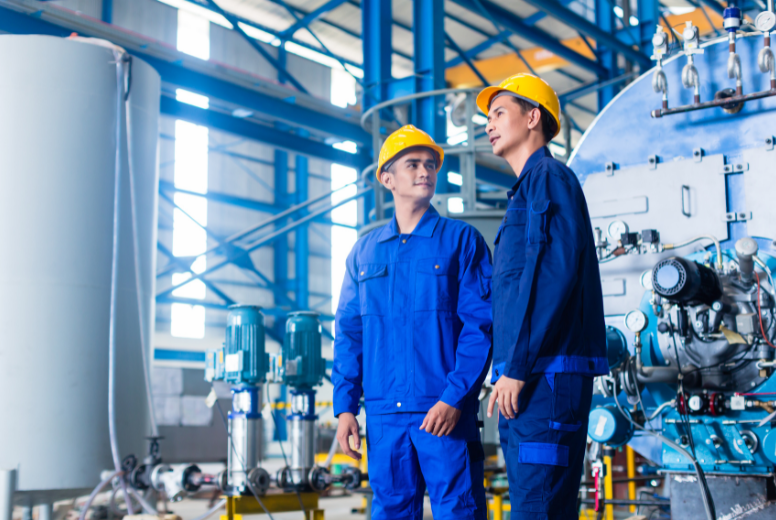
D. Maintenance Checks
1. Regular inspection tasks to ensure boiler efficiency and safety
Regular inspection of steam boilers is essential for maintaining their efficiency and ensuring safe operation. Some key inspection tasks include:
- Checking the boiler pressure, temperature, and water level
- Inspecting and cleaning the combustion chamber and heat exchanger
- Testing safety valves, pressure gauges, and other control devices
- Inspecting and maintaining electrical connections and components
2. Recommended maintenance schedule for different boiler components
Each component of a steam boiler requires specific maintenance tasks at regular intervals. A recommended maintenance schedule might include:
- Monthly inspections of safety devices and controls
- Quarterly cleanings of combustion chambers and heat exchangers
- Annual testing of safety valves and pressure gauges
- Biennial inspections of electrical connections and components
Steam Generation Process
A. Water Heating
Water heating is a crucial step in the steam generation process within boilers. It involves converting water into steam, which is essential for various industrial and commercial applications.
There are several methods used for water heating in steam boilers:
- Fire-tube Boilers: In this method, water is heated by hot gases flowing through tubes immersed in the water. The heat exchange occurs between the combustion gases and water, resulting in the generation of steam.
- Water-tube Boilers: Unlike fire-tube boilers, water-tube boilers have water-filled tubes through which hot gases flow. The heat transfer takes place between the combustion gases and the outside of the tubes, heating the water within.
- Electric Boilers: Electric boilers use electric resistance heating elements to heat the water directly. This method is popular for its efficiency and ease of use.
Efficiency in water heating can be influenced by several factors, including:
- Boiler Design: The design of the boiler affects the heating process and efficiency. Factors such as the heating surface area, tube layout, and insulation play a significant role in maximizing heat transfer.
- Water Quality: The quality of the water used in the boiler can impact its efficiency. Impurities, such as minerals and scale, reduce heat transfer and impair the overall performance of the boiler.
- Combustion Conditions: The combustion conditions, including fuel-air mix ratios, affect the temperature of the combustion gases and consequently the heat transfer to the water.
B. Fuel Combustion
In order to generate steam, steam boilers utilize fuel combustion processes, where fuel is burned to release heat.
The fuel combustion process involves:
- Fuel Preparation: The fuel is prepared, which may involve grinding, pulverizing, or drying depending on the type of fuel used.
- Fuel Ignition: The fuel is ignited, typically through the use of burners, to initiate the combustion process.
- Combustion Reaction: The ignited fuel reacts with oxygen in the air to release heat. This heat energy is then transferred to the water, resulting in steam generation.
To optimize combustion efficiency, various techniques can be employed:
- Combustion Air Control: Proper control of the air-to-fuel ratio is essential for efficient combustion. This ensures complete fuel combustion, minimizing the formation of pollutants and maximizing heat transfer.
- Flue Gas Recirculation: This technique involves reintroducing a portion of the flue gases into the combustion chamber, reducing the oxygen concentration and lowering the flame temperature. This results in reduced nitrogen oxide (NOx) emissions and improved efficiency.
- Burner Modifications: Upgrading burners can enhance combustion efficiency by improving fuel atomization, flame stability, and combustion completeness.
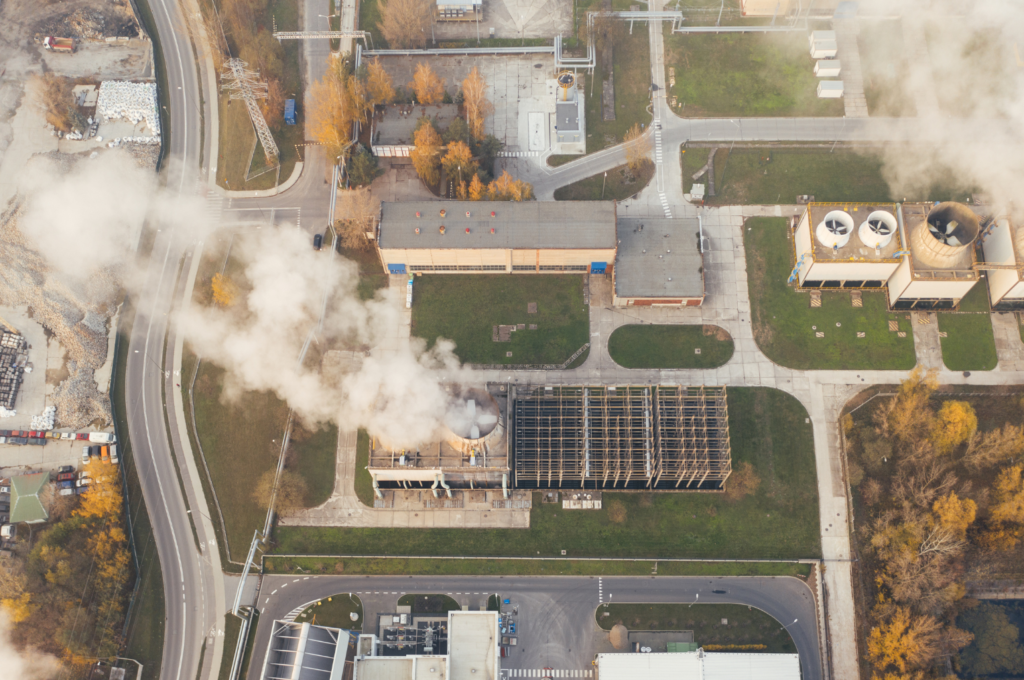
The Boiler at the Heart of Steam Generation
At the core of a steam boiler lies the boiler itself, a vessel designed to contain water and facilitate the controlled generation of steam. The boiler’s primary function is to transfer the heat energy produced by burning fuel to the water, transforming it into steam. This process occurs within a closed system, ensuring the integrity and efficiency of steam production. The design and engineering of boilers are carefully crafted to optimize heat transfer, fuel combustion, and steam generation, resulting in efficient and reliable performance.
Efficiency: Maximizing Heat Transfer and Fuel Utilization
Efficiency is a crucial aspect of steam boilers, as it directly impacts energy consumption, operational costs, and environmental sustainability. High-efficiency boilers are engineered to maximize heat transfer from the fuel source to the water, minimizing energy waste and fuel consumption. Modern steam boilers incorporate advanced technologies, such as improved combustion controls, enhanced insulation, and optimized heat exchangers, to achieve exceptional efficiency levels. Efficient steam generation ensures that a significant portion of the fuel’s energy content is utilized effectively, translating into cost savings and reduced environmental impact.
Industrial Applications: Powering Diverse Processes
Steam boilers are indispensable in a multitude of industrial sectors, providing the necessary heat for various processes and applications. In industries such as manufacturing, chemical production, food processing, and power generation, steam is utilized for heating, drying, sterilization, power generation, and mechanical work. Whether it’s powering turbines, facilitating chemical reactions, or maintaining precise temperature control, steam boilers play a vital role in enabling industrial processes to operate efficiently and effectively.
The Critical Role of Pressure in Steam Generation
Pressure is a key factor in steam boilers, influencing the boiling point and characteristics of the generated steam. By maintaining a specific pressure within the boiler, the boiling point of water is elevated, allowing it to reach temperatures higher than its normal boiling point at atmospheric pressure. The elevated pressure ensures that the steam produced carries a greater amount of heat energy, enabling it to perform various tasks in industrial applications. Effective pressure control ensures optimal steam generation, maintaining the desired temperature and pressure levels for efficient heat transfer and safe operation.
Steam boilers stand as a cornerstone of efficient heat generation for industrial processes, providing reliable and versatile heating solutions. By harnessing the power of steam, these systems enable industries to meet their heating needs while optimizing energy consumption and minimizing environmental impact. Efficient steam boilers maximize heat transfer and fuel utilization, ensuring cost savings and sustainability. Their diverse industrial applications highlight their indispensability in powering a wide range of processes. Understanding the role of pressure in steam generation allows for precise control and optimal performance. As technology advances and efficiency standards continue to rise, steam boilers will continue to be at the forefront of industrial heating, driving progress across multiple sectors.

Steam Boilers: Powerhouses of Industrial Heating Systems
Steam boilers are the backbone of industrial heating systems, offering efficient and reliable heat generation for a wide array of applications. In this section, we will delve deeper into the world of steam boilers, exploring their significance in industrial settings, the critical role of pressure, and the importance of efficiency in maximizing their performance as heating systems.
Industrial Heating Solutions: The Steam Boiler Advantage
Steam boilers play a pivotal role in industrial heating systems, providing a versatile and efficient heat source for a multitude of processes. Industries such as manufacturing, petrochemical, pharmaceuticals, textiles, and food processing rely on steam boilers to meet their heating requirements. These boilers ensure consistent and controlled heat delivery, enabling processes such as sterilization, drying, distillation, and power generation. The adaptability of steam as a heat transfer medium allows for precise temperature control, making steam boilers indispensable in a wide range of industrial applications.
Pressure: The Driving Force of Steam Boilers
Pressure is a fundamental aspect of steam boilers, serving as the driving force behind the generation and utilization of steam. By maintaining a specific pressure inside the boiler, water can reach temperatures higher than its boiling point at atmospheric pressure. This elevated pressure raises the boiling point of water, enabling it to absorb more heat energy and transform into steam. The steam produced under pressure carries a substantial amount of heat, facilitating efficient heat transfer within industrial processes. Accurate pressure control is vital to ensure the safe and efficient operation of steam boilers, allowing for optimal steam generation and distribution.
Efficiency: Maximizing Heat Transfer and Fuel Utilization
Efficiency is a key consideration in steam boiler design and operation, as it directly impacts energy consumption, operational costs, and environmental sustainability. High-efficiency steam boilers are engineered to maximize heat transfer from the fuel source to the water, ensuring minimal energy waste and optimal fuel utilization. Advanced technologies, including intelligent combustion controls, improved insulation, and efficient heat exchangers, enhance the overall efficiency of steam boilers. By optimizing heat transfer and fuel combustion, these boilers help reduce energy costs, minimize emissions, and promote sustainable industrial practices.
Optimizing Steam Boiler Efficiency for Enhanced Performance
To maximize the efficiency of steam boilers, several factors must be considered. Proper sizing and selection of steam boilers based on the heating requirements of specific industrial processes ensure optimal performance and energy utilization. Regular maintenance, including cleaning, inspection, and tuning, helps preserve efficiency and prevent potential issues. Monitoring and controlling combustion parameters, such as air-to-fuel ratios and excess oxygen levels, further optimize fuel utilization and reduce emissions. Implementing energy-saving measures, such as heat recovery systems and insulation improvements, enhances the overall efficiency of steam boiler operations, resulting in cost savings and environmental benefits.
Steam boilers stand as the powerhouses of industrial heating systems, providing efficient and reliable heat generation for a wide range of applications. Pressure plays a critical role in steam boiler operation, enabling the production of high-temperature steam for industrial processes. Maximizing efficiency through advanced technologies and best practices ensures optimal heat transfer and fuel utilization. By understanding the importance of pressure, efficiency, and proper maintenance, industries can harness the full potential of steam boilers, benefiting from reliable and sustainable heating solutions for their industrial processes.
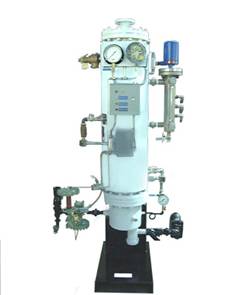
The Role of Water in Steam Boilers: Fueling the Fire and Harnessing Heat
Water plays a crucial role in steam boilers, serving as the primary medium for heat transfer and steam generation. In this section, we will explore the significance of water in steam boiler systems, focusing on its interaction with the boiler, fuel combustion, and the heat transfer process.
Water: The Lifeblood of Steam Boilers
In steam boilers, water acts as the lifeblood of the system, circulating through various components and facilitating the transfer of heat energy. The water within the boiler absorbs the heat generated by the fuel combustion process, transforming it into steam. This steam is then utilized for heating, power generation, or other industrial processes. The quality and properties of the water used in steam boilers, including its purity, pH levels, and chemical composition, are critical factors that impact the efficiency, longevity, and safe operation of the boiler system.
Fuel Combustion: Igniting the Fire Within
Fuel combustion is the driving force behind steam boiler operation, and water plays a vital role in this process. The fuel, whether it is natural gas, oil, or coal, undergoes combustion within the boiler’s firebox or combustion chamber. The heat generated by the burning fuel transfers to the surrounding water, raising its temperature and causing it to undergo a phase change from liquid to steam. Water acts as a heat sink, absorbing the energy released during fuel combustion and converting it into steam, which can then be harnessed for various applications.
Heat Transfer: From Water to Steam
The transfer of heat from the water to the steam is a critical process in steam boilers. As the water absorbs heat energy from the combustion process, it reaches its boiling point and begins to vaporize, forming steam. This phase change occurs at a constant temperature and pressure, known as the saturation point. The heat energy is then latent within the steam, ready to be utilized in industrial processes. Efficient heat transfer from water to steam ensures optimal energy utilization and steam quality, maximizing the overall efficiency of the steam boiler system.
Maintaining Proper Water Levels and Quality
Proper water levels and water quality are essential for the safe and efficient operation of steam boilers. The water level within the boiler must be carefully monitored and maintained to ensure adequate coverage of the heat exchange surfaces. Insufficient water levels can lead to overheating, reduced heat transfer, and potential damage to the boiler. Additionally, water quality must be controlled to prevent scale formation, corrosion, and fouling, which can impair boiler performance and longevity. Regular water treatment, including filtration, chemical treatment, and periodic blowdown, helps maintain optimal water conditions and safeguard the integrity of the steam boiler system.
Water plays a vital role in steam boilers, serving as the medium for heat transfer and steam generation. Its interaction with the fuel combustion process and its ability to absorb and transfer heat energy are essential for efficient steam boiler operation. Maintaining proper water levels and quality ensures safe and reliable boiler performance. By understanding the significance of water in steam boiler systems, industries can optimize heat transfer, fuel utilization, and overall system efficiency, harnessing the power of steam for a wide range of industrial applications.
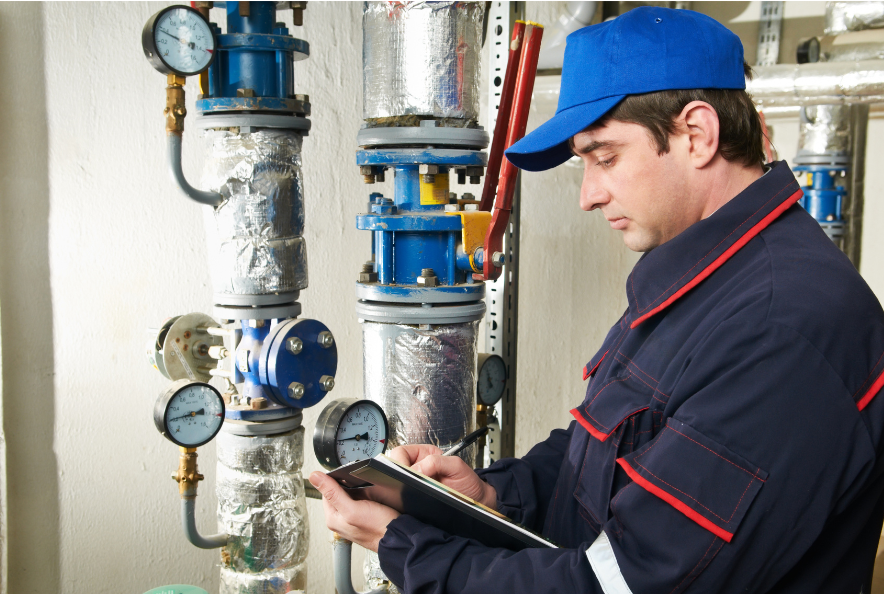
Boiler Efficiency Improvement
Improving the efficiency of steam boilers is essential to reduce energy consumption and operating costs. By implementing various methods, such as heat recovery systems, insulation, control systems, and regular maintenance, you can significantly enhance the performance of your boiler.
A. Heat Recovery Systems
Heat recovery systems are designed to capture and utilize waste heat from the flue gas or exhaust of the boiler. By recovering this heat and using it to preheat the feedwater or for other processes, you can improve the overall efficiency of your steam boiler.
- 1. Overview of heat recovery technologies in steam boilers: Explore different heat recovery technologies, such as economizers, condensing systems, and waste heat boilers, that can be integrated into steam boilers.
- 2. Benefits and implementation considerations for heat recovery systems: Understand the advantages of heat recovery systems, including energy savings, reduced emissions, and extended equipment lifespan. Learn about the key factors to consider when implementing these systems.
B. Insulation
Insulating your steam boiler is an effective way to prevent heat loss and improve its efficiency. Proper insulation techniques and suitable materials can help maintain the desired temperature, minimize energy waste, and reduce fuel consumption.
- 1. Insulation techniques to reduce heat loss and improve efficiency: Explore insulation methods such as lagging, cladding, and refractory insulation, which can prevent heat transfer and improve overall boiler efficiency.
- 2. Types of insulation materials suitable for steam boilers: Discover various insulation materials, including fiberglass, mineral wool, and ceramic fiber, and their suitability for steam boilers in terms of temperature, durability, and insulation properties.
C. Control Systems
Advanced control systems play a crucial role in optimizing boiler operation, ensuring efficient combustion, and maintaining desired steam parameters. Automated control and monitoring systems can enhance efficiency, reduce fuel consumption, and improve overall boiler performance.
- 1. Introduction to advanced control systems for efficient boiler operation: Learn about advanced control technologies, including advanced sensors, actuators, and computer-based control systems, that enable precise control of combustion, feedwater, and other boiler parameters.
- 2. Benefits of automated control and monitoring in steam boilers: Understand the advantages of automated control and monitoring, such as improved fuel efficiency, reduced emissions, enhanced safety, and simplified operation and maintenance.
D. Regular Maintenance
Scheduled maintenance plays a vital role in keeping steam boilers running at peak efficiency. Regular inspection, cleaning, and testing of key components can help identify and resolve issues, prevent breakdowns, and ensure optimal boiler performance.
- 1. Importance of scheduled maintenance for optimal efficiency: Understand the significance of regular maintenance in achieving and maintaining high boiler efficiency, extending equipment life, and reducing the risk of costly repairs.
- 2. Activities and procedures for maintaining peak boiler performance: Explore essential maintenance tasks, including cleaning combustion chambers, inspecting and replacing worn-out components, testing safety devices, and optimizing fuel-to-air ratios.
Diverse Applications of Steam Boilers: Meeting Industrial and Commercial Heating Demands
Steam boilers find versatile applications across various industrial and commercial sectors, providing efficient heating solutions to meet diverse demands. In this section, we will explore the broad range of applications for steam boilers, including industrial processes, low-pressure systems, and commercial heating requirements.
Industrial Heating: Powering Industrial Processes
One of the primary applications of steam boilers is in industrial settings, where they serve as the backbone of numerous heating processes. Industries such as manufacturing, chemical production, food processing, textiles, and pharmaceuticals rely on steam boilers to provide the heat necessary for a wide range of applications. Whether it is sterilization, drying, distillation, or power generation, steam boilers offer a reliable and efficient solution for industrial heating needs. Their ability to deliver high-temperature steam under pressure ensures precise temperature control and facilitates various industrial processes.
Low-Pressure Systems: Specialized Applications
While steam boilers are commonly associated with high-pressure systems, they also find applications in low-pressure settings. Low-pressure steam boilers are utilized in specific industries or processes that require lower steam temperatures and pressures. These applications may include certain manufacturing processes, cleaning and sterilization in healthcare facilities, humidification in controlled environments, or heating in specialized commercial sectors. Low-pressure steam boilers offer tailored solutions to meet the unique heating requirements of such applications, optimizing efficiency and performance while ensuring safe operation.
Commercial Heating: Efficient Space Heating
Steam boilers also play a vital role in commercial heating, providing efficient space heating solutions for buildings, hotels, schools, hospitals, and other large-scale facilities. In commercial applications, steam boilers deliver heat to radiators, convectors, or underfloor heating systems, ensuring comfortable indoor environments during colder months. The controlled release of heat from steam allows for precise temperature regulation, creating optimal conditions for occupant comfort. Commercial steam boilers are designed to accommodate the specific heating demands of these environments, providing reliable and energy-efficient heating solutions.
Pressure Applications: Adapting to Varied Needs
Steam boilers are engineered to meet different pressure requirements, making them adaptable to a wide range of applications. High-pressure steam boilers are commonly used in industries where high temperatures and pressures are necessary for specific processes, such as power generation, chemical reactions, or steam turbines. These boilers deliver steam at elevated pressures, harnessing the energy potential of steam for specialized applications. On the other hand, low-pressure steam boilers cater to applications that require lower steam temperatures and pressures, offering precise control and optimized efficiency for specific industrial or commercial needs.
Steam boilers have diverse applications across industrial and commercial sectors, catering to a broad range of heating demands. They are indispensable in industrial processes, providing the necessary heat for various applications. Whether in high-pressure or low-pressure systems, steam boilers offer tailored solutions to meet specific requirements. Additionally, commercial steam boilers ensure efficient and comfortable space heating in large-scale facilities. By understanding the varied applications of steam boilers, industries and commercial sectors can leverage their capabilities to achieve reliable, energy-efficient, and cost-effective heating solutions, supporting their operations and enhancing overall productivity.

Boiler Applications
A. Power Generation Plants
Steam boilers play a crucial role in power generation plants, where they are used to generate electricity. The process involves the burning of fossil fuels such as coal, natural gas, or oil to produce high-pressure steam. This steam then passes through turbines, which generate mechanical power before being converted into electrical power by a generator. Steam boilers in power plants are designed to deliver large quantities of steam at high temperatures and pressures to drive the turbines efficiently.
There are different types of boilers used in power plants, depending on the specific requirements and fuel sources. These include:
- Coal-fired boilers: These are the most commonly used boilers in power plants. They burn coal to produce steam and have high thermal efficiency.
- Natural gas-fired boilers: These boilers burn natural gas, which is a cleaner fuel compared to coal. They are popular due to their lower emissions and faster start-up times.
- Oil-fired boilers: Oil-fired boilers burn oil as the primary fuel source. They offer flexibility in fuel sources and are commonly used as backup boilers.
B. Industrial Processes
Steam boilers find extensive applications in various industrial processes, where they are critical for manufacturing operations. These applications include:
- Chemical industry: Steam boilers are used for various chemical processes such as distillation, evaporation, and drying. They provide the necessary heat and steam for chemical reactions and the production of chemical products.
- Food processing industry: Steam boilers are vital in food processing plants for tasks like cooking, sterilizing, and pasteurizing. They ensure food safety and quality by providing the required heat for processing and preserving food products.
- Textile industry: Steam boilers are used in textile mills for tasks like dyeing, bleaching, and drying of fabrics. They play a crucial role in enhancing the efficiency and productivity of textile manufacturing processes.
Case studies and examples abound in industrial processes where steam boilers have revolutionized production techniques. Whether it’s in the pharmaceutical, paper, or automotive industry, steam boilers have proven their worth as reliable and efficient heat sources.
C. Heating Systems
Steam boilers are widely used for central heating in residential and commercial buildings. They provide heat through radiators, baseboard heaters, or underfloor heating systems. Some advantages of steam-based heating systems include:
- Even distribution of heat: Steam can travel long distances without losing much heat, ensuring even heating throughout the building.
- Efficiency: Steam boilers can be highly efficient, with modern designs incorporating advanced technologies to maximize energy utilization.
- Reliability: Steam systems are known for their long lifespan and durability. Properly maintained steam boilers can last for several decades, providing consistent heat throughout the years.
However, there are also considerations when using steam-based heating systems. These include the need for regular maintenance, higher installation costs compared to alternative heating methods, and the requirement for skilled technicians to operate and maintain the boiler system.
Boiler Safety
A. Pressure and Temperature Limits
1. Safe operating limits for pressure and temperature in steam boilers
When it comes to steam boilers, it is crucial to operate within the recommended pressure and temperature limits. These limits are determined by the design and construction of the boiler, as well as the specific requirements of the application.
2. Consequences of exceeding recommended limits
If the pressure or temperature exceeds the recommended limits, it can lead to serious consequences such as boiler explosions, equipment damage, and even injuries or loss of life. It is essential to closely monitor and control these parameters to ensure safe and efficient operation of the steam boiler.
B. Safety Valves and Water Level Controls
1. Importance of safety valves and water level controls in steam boilers
Safety valves and water level controls play a critical role in maintaining boiler safety. Safety valves are designed to relieve excess pressure in the boiler, preventing it from reaching dangerous levels. Water level controls help maintain the proper water level inside the boiler, ensuring efficient and safe operation.
2. Proper installation and maintenance of safety devices
It is essential to install safety valves and water level controls correctly and ensure regular maintenance to guarantee their proper functioning. Regular inspections, testing, and maintenance should be carried out to identify any potential issues and address them promptly.
C. Emergency Procedures
1. Step-by-step instructions for handling boiler emergencies
In the event of a boiler emergency, it is crucial to follow step-by-step procedures to minimize risks and ensure the safety of personnel and property. These procedures may include shutting down the boiler, isolating the fuel supply, and evacuating the affected area.
2. Importance of emergency drills and preparedness
Regular emergency drills and preparedness training should be conducted to familiarize personnel with the emergency procedures and ensure they can respond effectively during critical situations. This proactive approach can significantly reduce the impact of boiler emergencies and save lives.
Boiler Emissions and Environmental Impact
Steam boilers play a crucial role in various industrial processes, but it is essential to address the potential environmental impact they might have. This section explores the emissions generated by boilers and the measures taken to reduce their environmental footprint.
Combustion and Air Quality
1. Effects of combustion on air quality and environmental health: Combustion processes in steam boilers can produce pollutants such as nitrogen oxides (NOx), sulfur oxides (SOx), carbon monoxide (CO), and particulate matter (PM). These emissions contribute to air pollution and can have detrimental effects on human health and the environment.
2. Emission control techniques and regulations: Various emission control techniques like selective catalytic reduction (SCR) and flue gas desulfurization (FGD) systems are used to reduce boiler emissions. To ensure compliance and protect the environment, national and international regulations are in place to limit the amount of pollutants released into the atmosphere.
Reduction of Pollutants
- Overview of technologies and practices to reduce boiler emissions: Several technologies and practices are employed to minimize boiler emissions. These include low NOx burners, fuel switching, optimizing combustion parameters, and utilizing advanced air pollution control devices.
- Implementation considerations and benefits of emission reduction strategies: Implementing emission reduction strategies not only helps to protect the environment but also offers significant benefits to industries. Apart from reducing pollution and improving air quality, these strategies can result in cost savings, increased energy efficiency, and enhanced public perception.
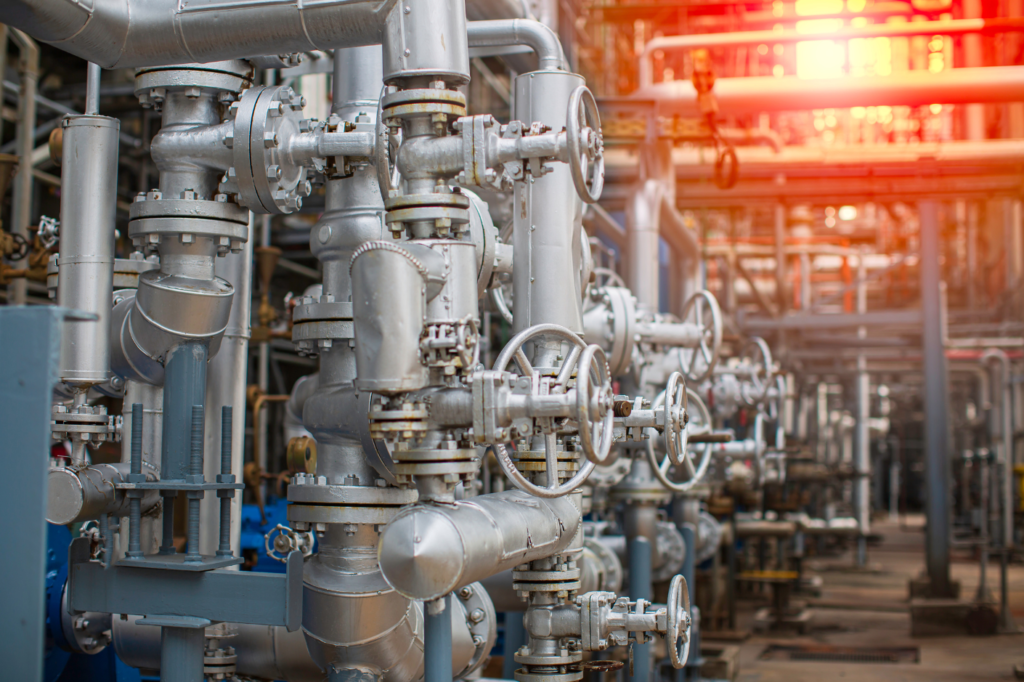
Boiler Troubleshooting
A. Low Pressure Issues
Low steam pressure in boilers can result in inefficient operation and decreased performance. It is important to identify the causes of low pressure and implement the necessary solutions to resolve the problem.
1. Causes and solutions for low steam pressure in boilers
- Insufficient water level in the boiler – Check the water level and add water if necessary.
- Blocked or restricted steam vents – Clear any obstructions in the steam vents to allow for proper steam flow.
- Faulty pressure reducing valve – Inspect the pressure reducing valve and replace if necessary.
- Inadequate fuel supply – Ensure that the fuel supply is sufficient and unimpeded.
2. Troubleshooting steps to resolve low pressure problems
- Check the water level in the boiler and add water if needed.
- Inspect and clear any obstructions in the steam vents.
- Examine the pressure reducing valve and replace if faulty.
- Verify the fuel supply and make adjustments if necessary.
B. Leaks and Water Loss
Leaks in steam boilers can lead to water loss, decreased efficiency, and potential safety hazards. It is crucial to identify the common causes of leaks and take appropriate measures for inspection and repair.
1. Common causes of leaks in steam boilers
- Corroded or damaged boiler components – Inspect and replace corroded or damaged components.
- Excessive pressure – Monitor and adjust the pressure within safe limits to prevent leaks.
- Improper installation or maintenance – Ensure proper installation and regular maintenance to prevent leaks.
2. Inspection and repair methods for addressing leaks
- Perform a thorough inspection of all boiler components for corrosion or damage.
- Monitor the boiler pressure and adjust if necessary.
- Implement proper installation techniques and conduct regular maintenance.
C. Fuel Supply Issues
Troubleshooting fuel supply problems in steam boilers is essential for ensuring optimal performance and preventing disruptions in operation.
1. Troubleshooting fuel supply problems in steam boilers
- Clogged or dirty fuel filters – Clean or replace clogged or dirty fuel filters.
- Fuel line blockages – Clear any blockages in the fuel lines to ensure proper fuel supply.
- Fuel pressure issues – Check fuel pressure and make adjustments as needed.
- Malfunctioning fuel pumps – Inspect and repair or replace malfunctioning fuel pumps.
2. Maintenance and restoration procedures for fuel systems
- Regularly clean or replace fuel filters to prevent clogs.
- Inspect fuel lines regularly and clear any blockages.
- Monitor and adjust fuel pressure to maintain optimal performance.
- Regularly inspect fuel pumps for any malfunctions and perform necessary repairs or replacements.
D. Control System Malfunctions
Control system malfunctions in steam boilers can lead to erratic operation and potential safety hazards. It is crucial to diagnose and resolve control system malfunctions promptly and conduct regular maintenance to ensure their proper functioning.
1. Diagnosis and resolution of control system malfunctions in steam boilers
- Check for loose or damaged wiring connections – Secure or replace loose or damaged wiring connections.
- Faulty sensors or switches – Inspect and replace malfunctioning sensors or switches.
- Misconfigured control settings – Adjust control settings to the appropriate parameters.
- Defective control unit – Repair or replace defective control unit components.
2. Importance of regular control system maintenance
Regular maintenance of control systems is essential to prevent malfunctions and ensure safe and efficient boiler operation. Conducting routine inspections, cleaning, and testing of control system components can identify any potential issues and allow for timely repairs or replacements.

Burner Combustion Systems
If you’re seeking additional resources or expert advice on steam boilers, we offer comprehensive consulting services tailored to your specific needs. Our team of industry experts is equipped with extensive experience and expertise in boiler systems. Contact us today to explore how we can assist you in optimizing your steam boiler operations and achieving your industrial goals.
Remember, understanding and effectively managing steam boilers can lead to substantial improvements in productivity, efficiency, and sustainability within your industrial operations.
